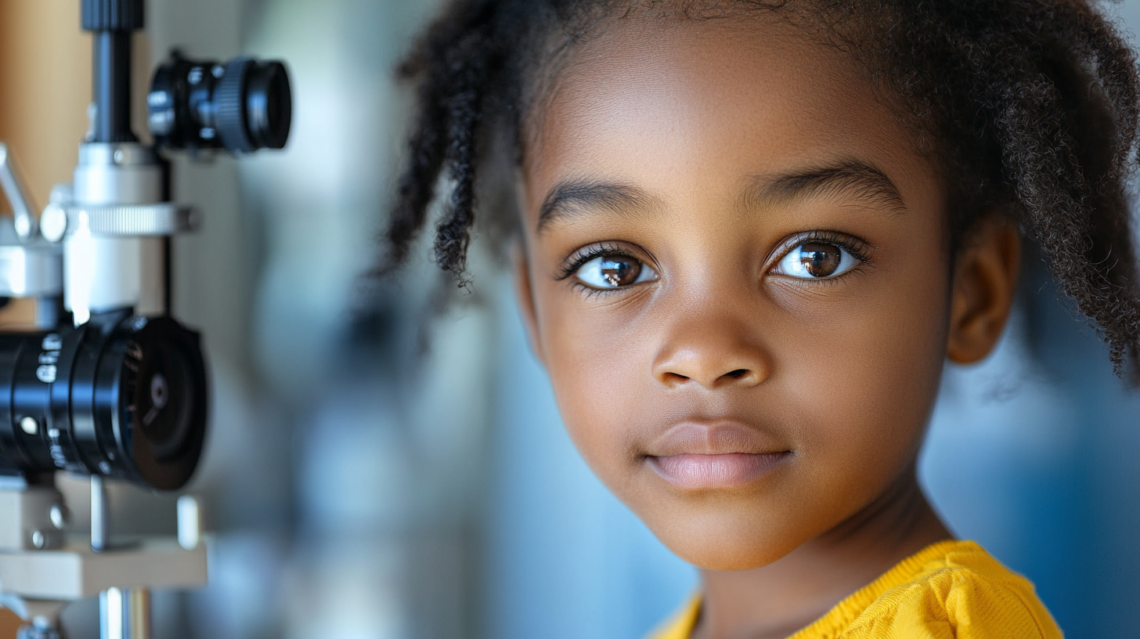
Children’s Vision
Children’s vision develops and functions quite differently from that of adults, and understanding these differences is crucial for ensuring their long-term eye health. Unlike adults, whose visual systems have fully matured, children’s eyes are in a constant state of growth and development. This ongoing development of vision in childhood makes regular eye exams incredibly important, as any issues that arise during these formative years can have a lasting impact on their ability to see clearly and function effectively in both educational and social settings. Vision is a critical component of learning, and any undiagnosed or untreated vision problems can lead to difficulties in school, delayed developmental milestones, and even potential long-term consequences for their overall health and well-being.
One of the most significant differences between children’s vision and that of adults is the way their eyes grow and adapt to visual stimuli. At birth, a child’s eyes are not fully developed. Newborns, for example, have relatively poor vision and are only able to focus on objects about 20 to 30 centimetres away from their face. As the child grows, so too does their ability to see at greater distances, to perceive depth, and to track moving objects with their eyes. By the time a child reaches about six months of age, their vision has typically improved significantly, but the full development of visual acuity – the sharpness of vision – can continue into early adolescence.
Another key difference is that children’s eyes are more susceptible to certain conditions, such as amblyopia (commonly referred to as “lazy eye”), strabismus (crossed eyes), and refractive errors like myopia (nearsightedness), hyperopia (farsightedness), and astigmatism. These issues can often go unnoticed by parents and teachers because children may not be able to articulate that something is wrong with their vision. A child who has never experienced clear vision may not realize that the way they see the world is different from how others do. This is why regular eye exams, ideally beginning at six months of age and continuing through childhood, are so essential. A child’s brain is highly adaptable, and early intervention can often correct these issues, but the window for successful treatment is limited. If conditions such as amblyopia or strabismus are not addressed in the early years, they can lead to permanent vision impairment because the brain may stop accepting input from the affected eye.
In addition to these developmental differences, children’s eyes also require protection from environmental factors that can lead to long-term damage. For example, children tend to spend more time outdoors than adults, which exposes them to higher levels of ultraviolet (UV) radiation from the sun. While sunlight is essential for overall health, prolonged exposure to UV rays can increase the risk of developing cataracts and other eye conditions later in life. Children’s lenses are more transparent than those of adults, which means they allow more UV light to reach the retina. This makes it particularly important for children to wear sunglasses that block 100% of UV rays whenever they are outside. Parents should also be mindful of the increasing amount of time children are spending on digital devices. Extended screen time can lead to eye strain and discomfort, known as digital eye strain or computer vision syndrome. Symptoms of this condition can include headaches, blurred vision, and dry eyes, which, if not addressed, may affect a child’s academic performance and overall well-being.
The importance of early and regular eye exams for children cannot be overstated, as vision plays a critical role in nearly every aspect of a child’s development. A significant portion of classroom learning is visual, and children with uncorrected vision problems are often mistakenly identified as having learning disabilities or behavioural issues. A child who cannot see the chalkboard clearly, or who struggles to read books and other materials, may become frustrated, lose interest in school, or exhibit disruptive behaviour. Furthermore, poor vision can impact a child’s social interactions, self-esteem, and even physical coordination in sports and other activities.
Eye exams for children are tailored to their age and developmental stage. For very young children, optometrists use a variety of techniques to assess vision, including the use of lights, toys, and cards with simple shapes to determine how well a child’s eyes are functioning. As children grow older, more traditional methods of testing, such as reading an eye chart, become feasible. In addition to checking for refractive errors like nearsightedness and farsightedness, the optometrist will assess the overall health of the eye, ensuring that the muscles around the eyes are working together properly and that there are no signs of eye disease or other conditions that could impair vision.
It’s also important to recognize that children’s vision can change rapidly as they grow, so even if a child passes an eye exam at one age, it does not mean they will not need glasses or other interventions later on. This is why annual eye exams are recommended for school-aged children, as they allow for the early detection of any changes in vision. Children who wear glasses or contact lenses should have their eyes checked even more frequently to ensure that their prescription remains accurate and that their eyes are healthy.

